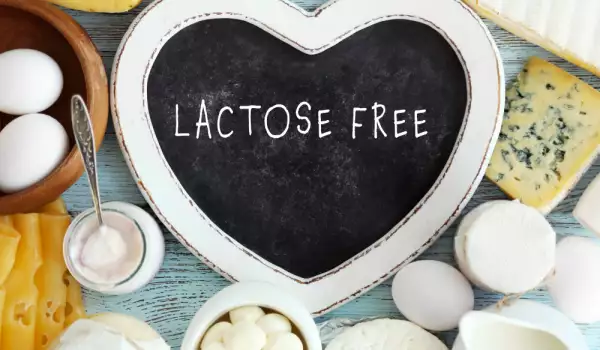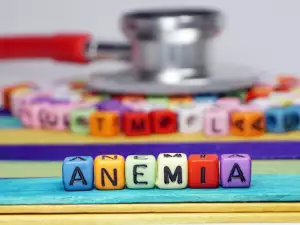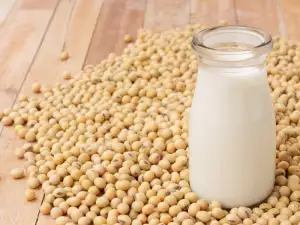Milk and dairy products are among the main foods in the human menu from birth to death. It has been a staple human food since time immemorial.
However, some people are unable to consume this food product and that's why we will talk about lactose intolerance.
What is this condition and how can we deal with it?
Lactose and lactose intolerance
Lactose is the main sugar in milk. It can only be found in it and its products - cheese, yellow cheese, cottage cheese. In order to be digested, lactose requires the presence of an enzyme - lactase. Lactase is produced in the small intestine and breaks down lactose from food products into 2 other sugars - glucose and galactose. They are easily absorbed by the intestinal tract.
Sometimes the body does not produce lactase in sufficient quantity and that's when lactose intolerance happens. It is expressed in the body's inability to fully digest lactose due to a lack of lactase produced by the small intestine.
These undigested amounts fall into the large intestine, where they ferment and produce unpleasant sensations - diarrhea, pain, bloating and gas. Things are complicated, because there is an overlap of the symptoms of lactose intolerance with those of another disease - irritable bowel syndrome - which has the same symptoms. Another reason, which is completely confusing - lactose intolerance can easily be mistaken for allergy to milk proteins.
However, with the allergy to milk proteins, there are disturbances in the immune system, causing digestive problems, but there are also respiratory and dermatological problems - coughing, sneezing, urticaria, eczema.
Lactose intolerance does not pose risks of complications, unlike milk protein allergy.
Today, almost 75% of the adult population of the world is characterized by a decrease in the activity of the lactase enzyme. Onset of lactose insufficiency after the period of childhood is a condition characteristic mostly of the Western European type of person, some Asians and most Africans. Lactose intolerance diagnosed in infants is due to genetic factors.
Brief history of the lactose intolerance condition
There are reports that this digestive disorder was first described by Hippocrates. He talks about a condition where patients complain of indigestion after consuming milk. Only in the twentieth century, however, was this condition described and studied in detail.
According to scientists, a chromosome mutation occurred in ancient times and made the regulatory protein that suppresses the production of the lactase enzyme in adulthood non-functional.
Forms of lactose intolerance

There are congenital and acquired forms of lactose intolerance. The primary one is characteristic of the primary age - in newborns and young children, while the secondary one affects adults.
Lactose intolerance in newborns and young children
Lactose deficiency can appear as a congenital problem immediately after birth and then symptoms appear very quickly. It is believed that the cause is rooted in the mutation of a gene responsible for the production of lactase. The condition is rare.
Its presence results in a temporary lactase deficiency, which is expressed in the inability of the body to assimilate the milk sugar of galactose and glucose due to the insufficient amount of lactase.
The result is that the undigested lactose enters the colon and the bacteria there form lactic acid, carbon dioxide and hydrogen. The intestinal walls swell and this causes spasms and pain in the baby. However, this intolerance is temporary and is due to the imperfect digestive system and the intake of only lactose as the main ingredient of breast milk and infant formulas.
Secondary lactose intolerance
Secondary lactose intolerance is not due to reduced production of lactase due to enzyme deficiency, but is a side effect of another disease. It most often occurs when the intestinal epithelium is damaged by taking antibiotics and cytostatics or diseases of the digestive system such as Crohn's disease, ulcerative colitis, inflammatory gastroenteritis, gluten intolerance and others. This secondary lactose intolerance may be reversible, as once the intestinal epithelium regenerates, improvement will occur.
Symptoms of lactose intolerance
Symptoms of lactose intolerance appear half an hour to 2 hours after consuming dairy products. They are the following:
- Muscle cramps;
- Nausea;
- Increase in acidity;
- Diarrhea;
- Intestinal flatulence;
- Gases;
- Increased pressure in the colon.
We can check if we suffer from lactose intolerance in 2 ways. The first is intake of milk on an empty stomach. If no reaction occurs in the next 30 minutes to 2 hours, the answer is negative. This intolerance can also be checked if cheese or cottage cheese is consumed. All the proteins in milk are also in these products.
Medical tests are done in a hospital setting and the results are accurate.
How is lactose intolerance controlled?

Control comes naturally through food. First of all, everyone should be aware of what foods contain lactose and avoid those containing milk sugar. These are, first of all, dairy products - cheese, yellow cheese, cottage cheese. However, they are not the only ones on this list.
Lactose is used in baking bread to produce the delicious brown crust.
In the confectionery industry, it is used to produce candies, biscuits and other sweets.
There is lactose even with meat products to remove the bitter and salty taste and extend their shelf life.
It is added to alcoholic beverages to soften the taste.
In many medicines, about 20% is lactose.
Lactose deficiency is controlled with nutritional supplements containing the enzyme.
Treatment of lactose intolerance
Lactose intolerance usually has no cure. A lactose intolerance diet, excluding lactose-containing foods, is maintained.
What are food substitutes for lactose intolerance?
Lactose-free milk substitutes
Milk alternatives are plentiful and delicious. They are usually plant-based. Soy milk, almond milk, milk, nut milk - these are all excellent alternatives to cow's milk. Coconut and oat milk have a delicate and light taste. These types of milk usually do not contain calcium, but they do have vitamins and minerals in them. Almond milk contains magnesium and vitamin E and rice milk contains vitamin B12. Hemp milk and spelt milk should also be included in the menu of such a diet.
Yogurt substitutes

Coconut yogurt is an exotic alternative to animal products, but it's unexpectedly delicious. Other options are soy yogurt, almond yogurt, cashew yogurt and others.
Butter substitutes
In terms of taste and texture, almond butter is the best. It is light, with a pleasant texture. Olive oil and coconut oil are good for cooking, baking, stewing and flavoring food. Avocado oil is good for salads and dressings.
Cheese substitutes
Nut cheeses are a great vegan alternative. Coconut cheese and cashew cheese are enjoyed by people. They provide the necessary proteins and have a pleasant salty taste.
Ice cream substitutes
Vegan ice creams are now very diverse. Coconut milk can be added to them for a creamy texture.
Calcium, which is lacking in these diets, can be obtained from green leafy vegetables and vitamins D and K from spinach, nettles, turnips, broccoli and whole grains.




















Comments